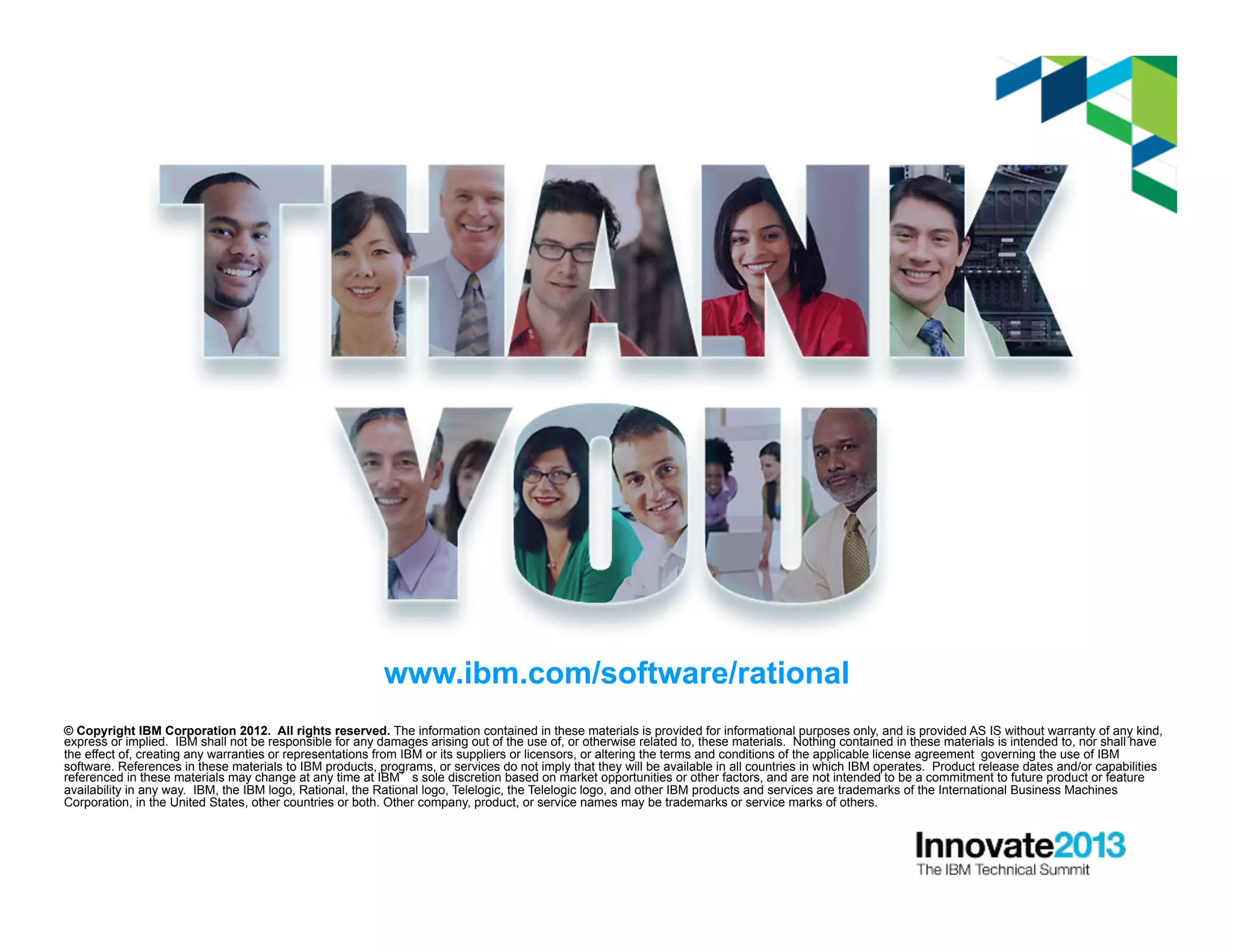DevOps for the Mainframe aims to leverage continuous integration, cloud technologies, and beyond to deliver z/OS applications. The document discusses how DevOps principles can help enable rapid evolution of deployed z/OS services by reducing risk, decreasing costs, and improving quality. It provides examples of how tools from IBM can help implement a continuous delivery pipeline for mainframe development and testing that incorporates automated testing, configuration, and deployment.
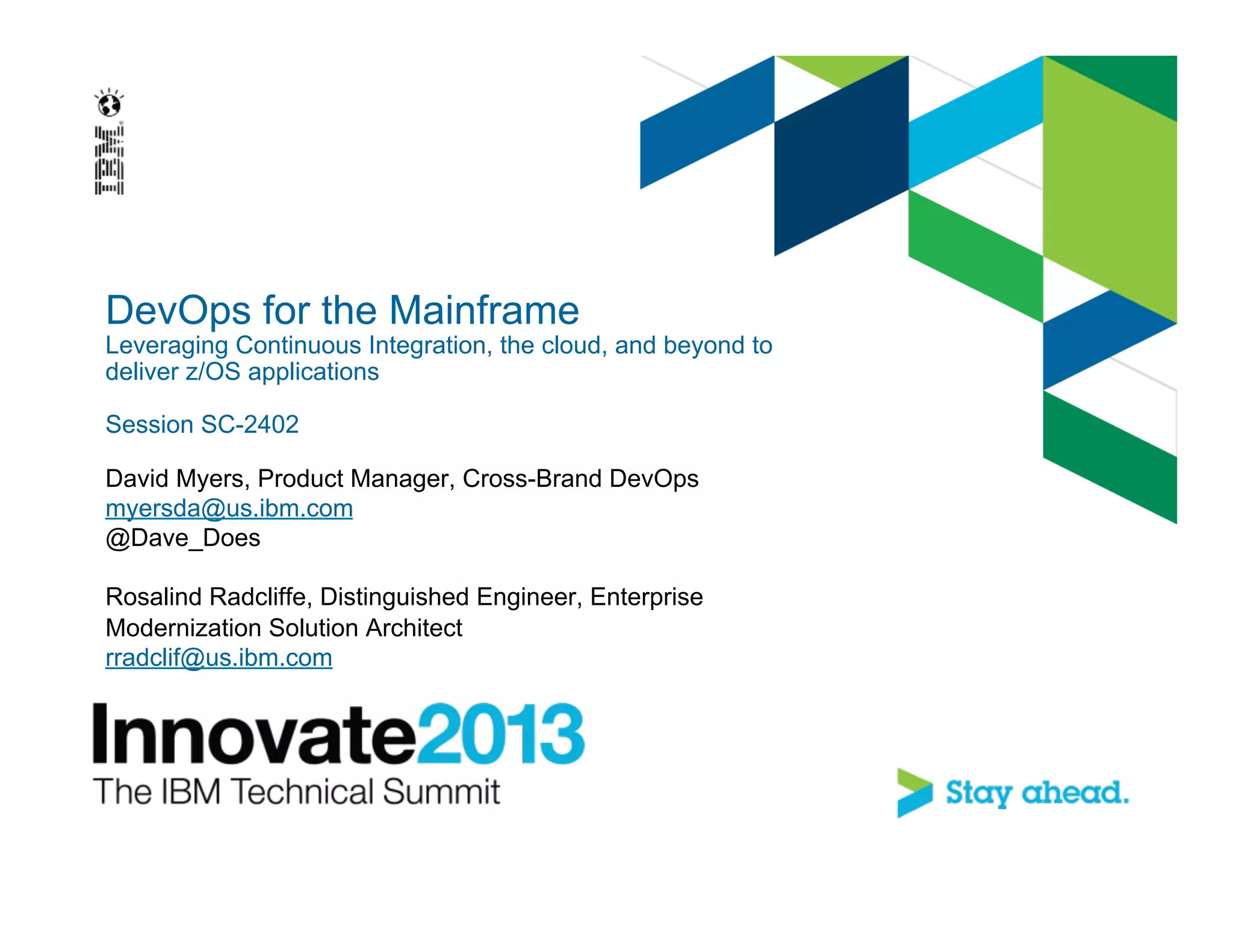
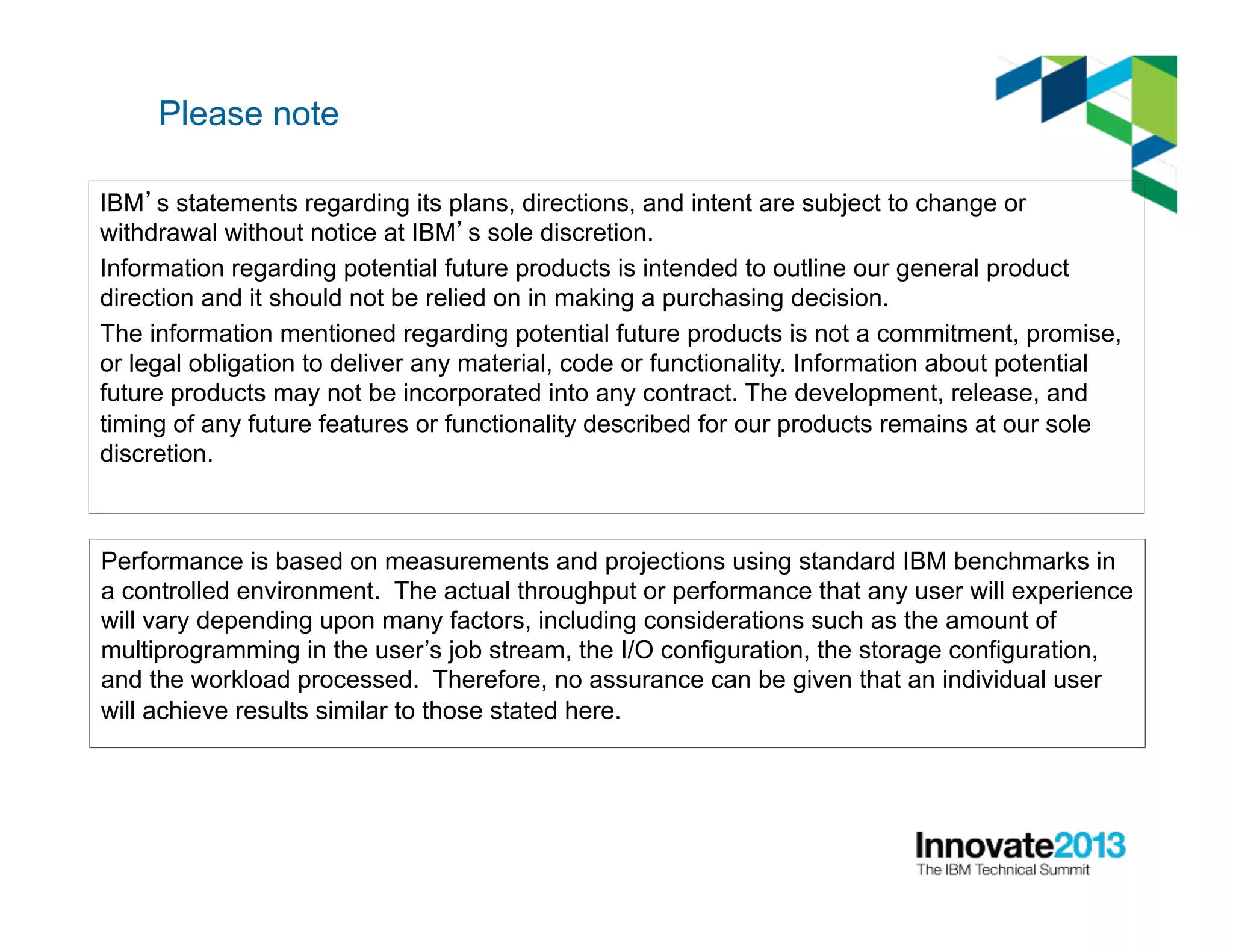
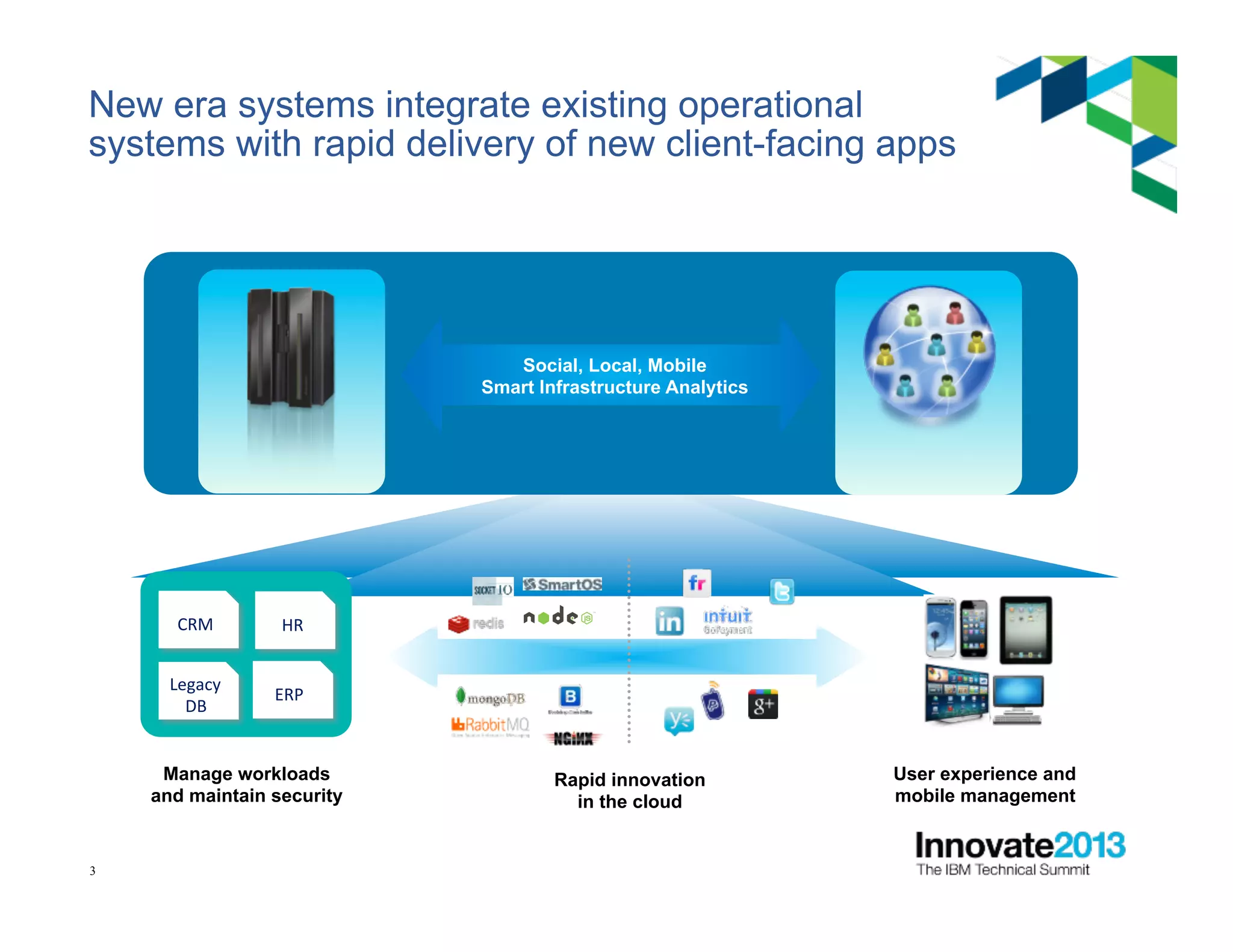
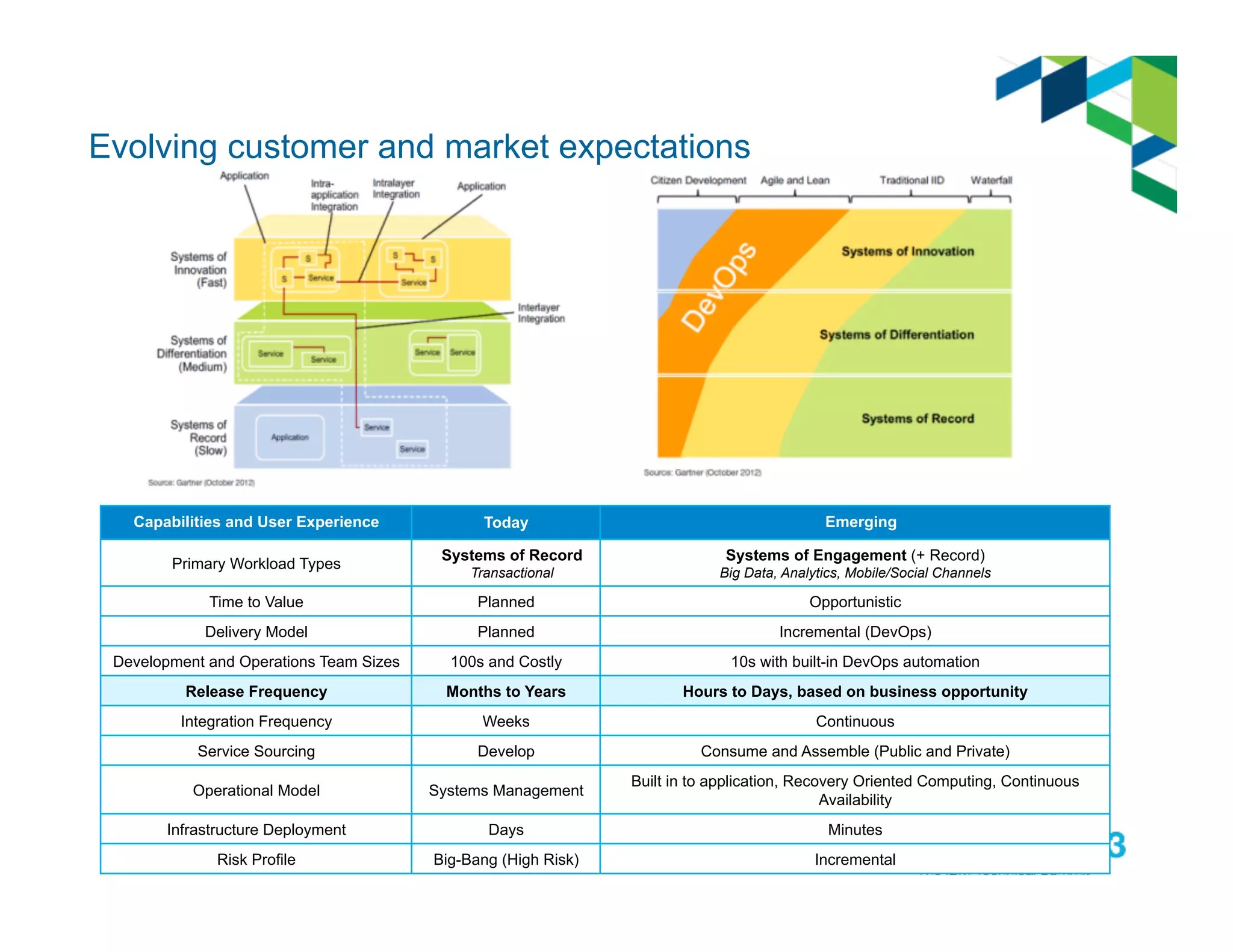
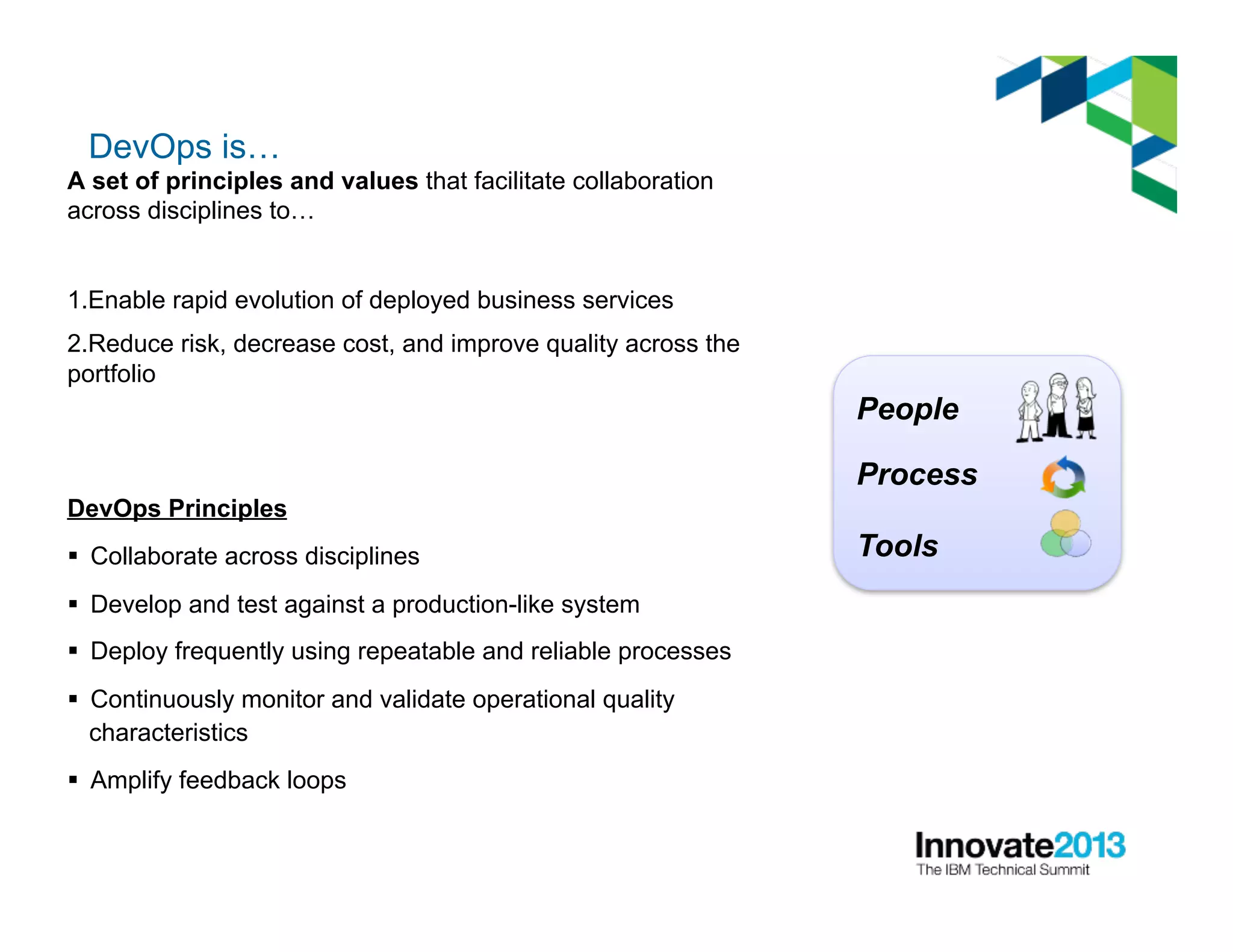
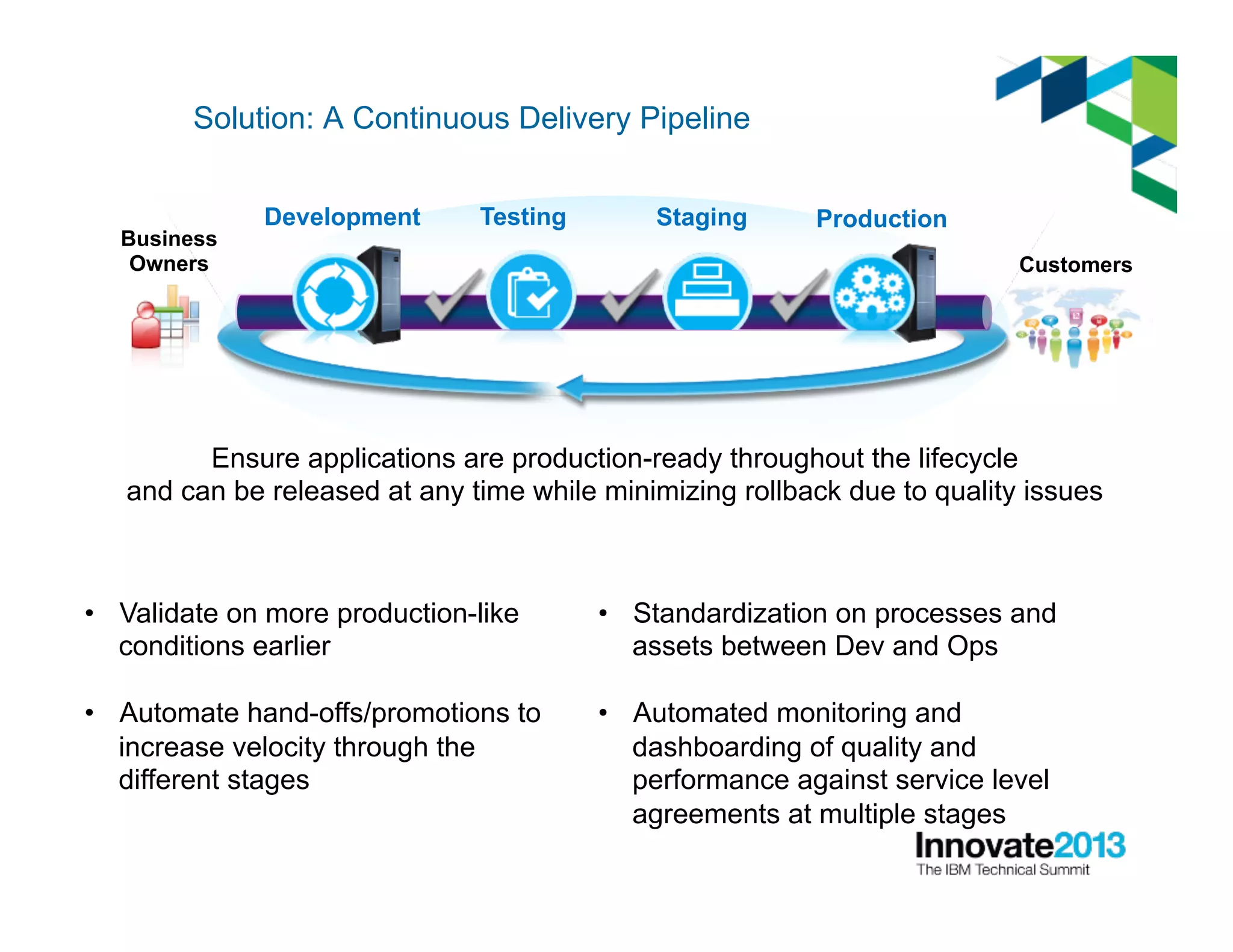
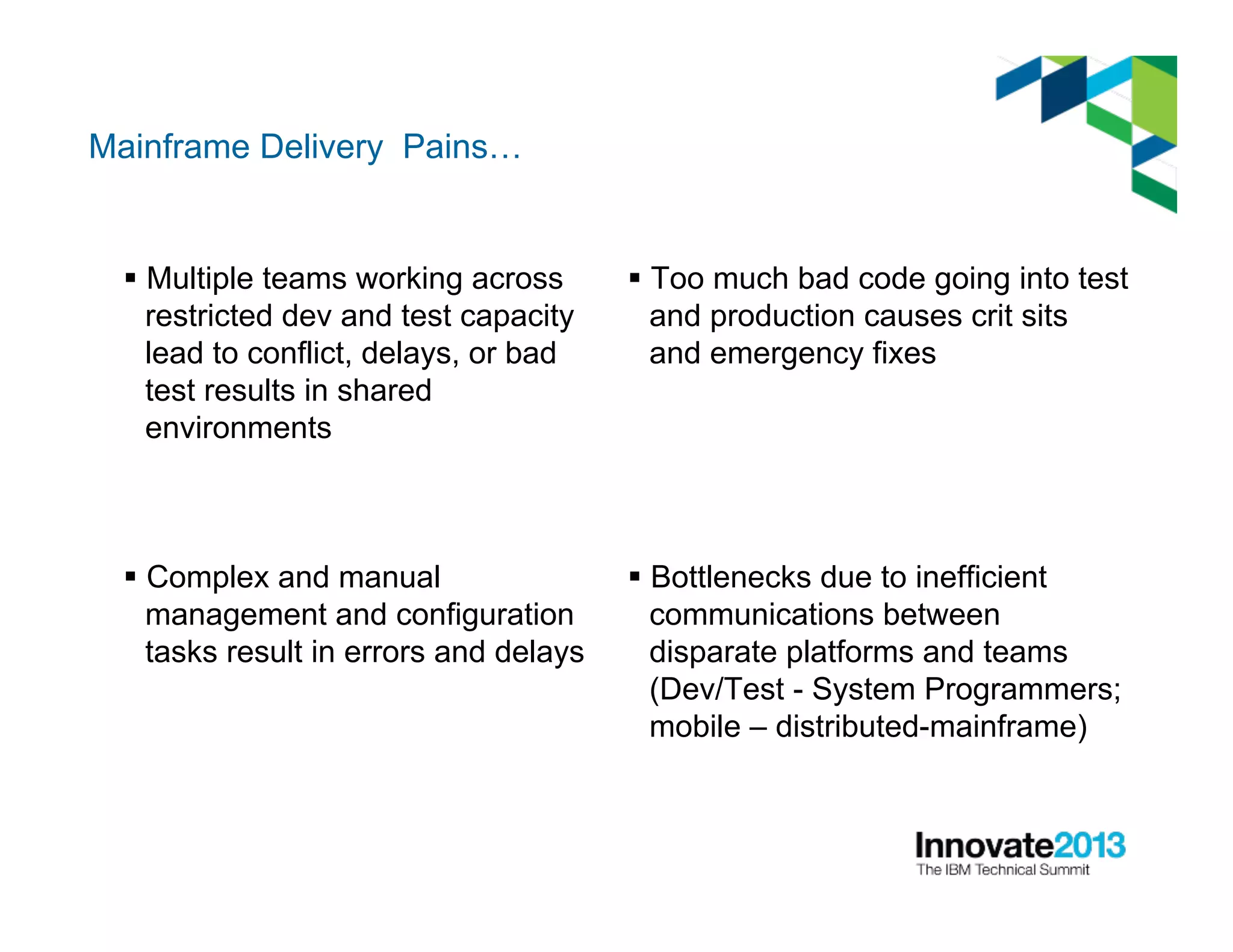
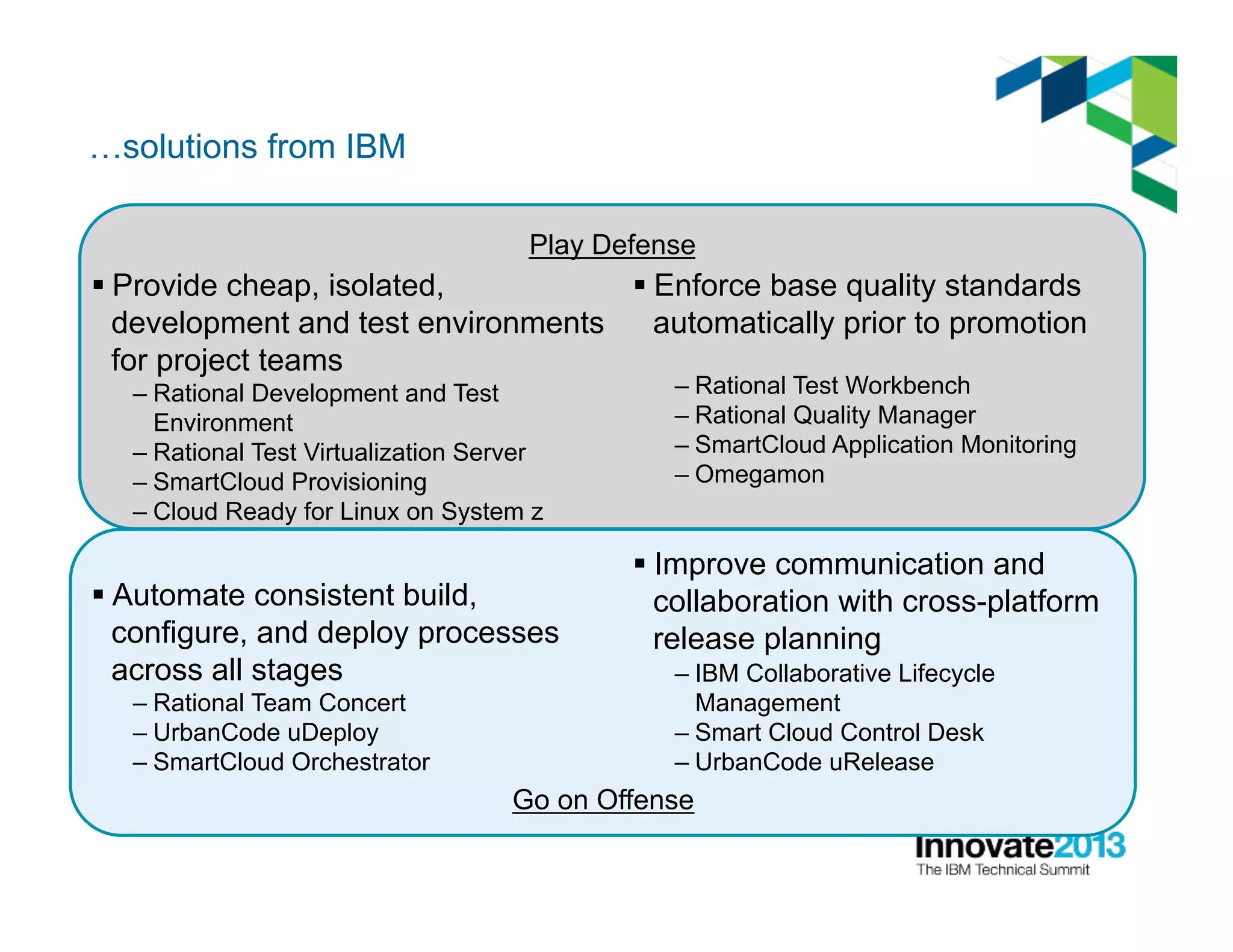
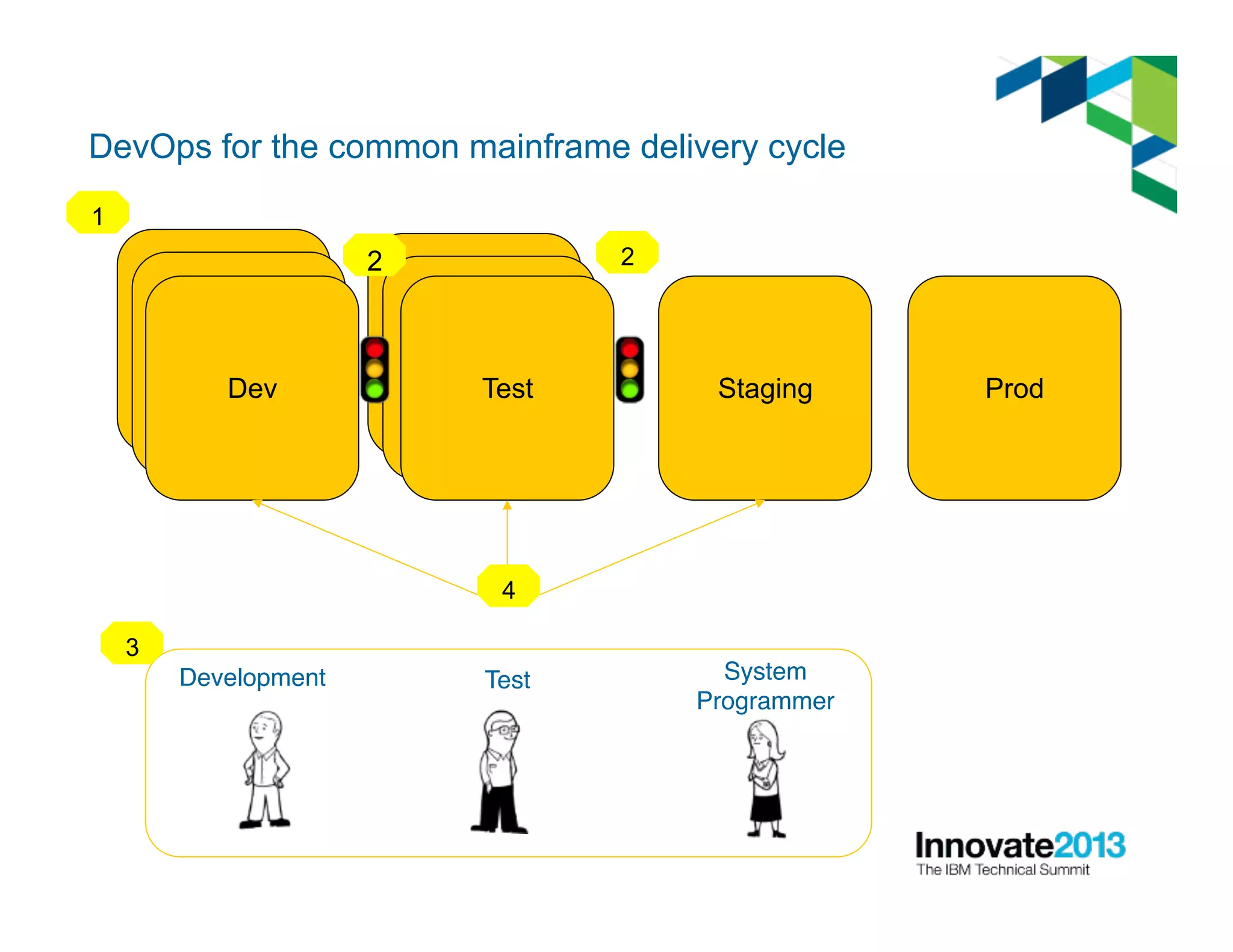
![10 10
Test LPAR
z/OS
…
Typical z/OS Testing Architecture
Organized by project team, vertically scaled, sharing resources, limited automation
Project
Team
[April Maintain]
Project
Team
[Prototype SOA]
Project
Team
[June New Func]
Project
Team
[Dec Sys Upgrade]
Test
Data
App
App
App
Problems Encountered
1. Shared resources combined
with overlapping schedules can
elicit conflicts, impede
innovation and slow code
delivery
2. Coordination of environmental
changes and releases cause
bottlenecks, delays and
additional overhead
3. Shared test data is difficult to
manage and can lead to over
testing or incorrect test results](https://image.slidesharecdn.com/devopsformainframeinnovatesession2402-130610104446-phpapp01/75/Dev-ops-for-mainframe-innovate-session-2402-10-2048.jpg)
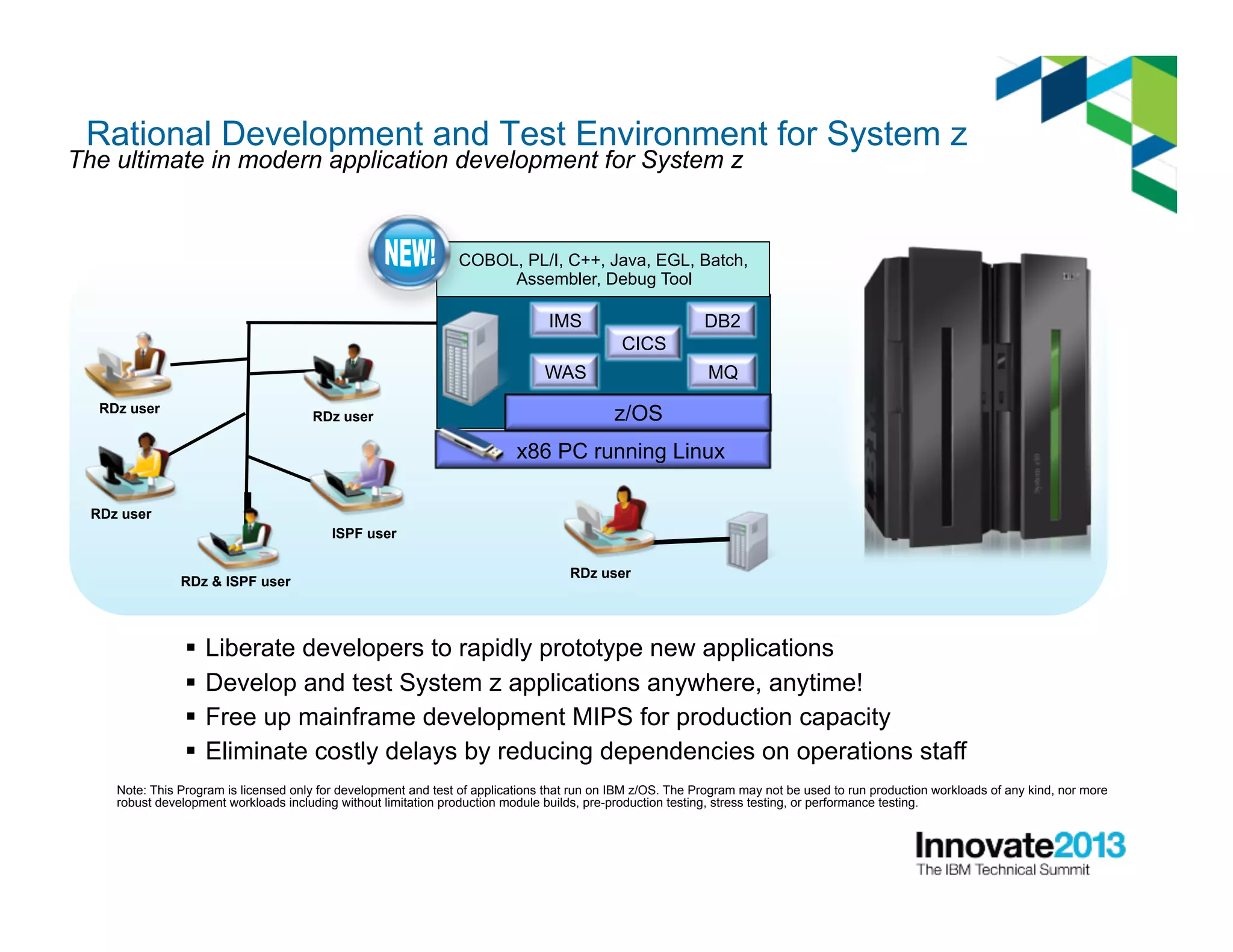
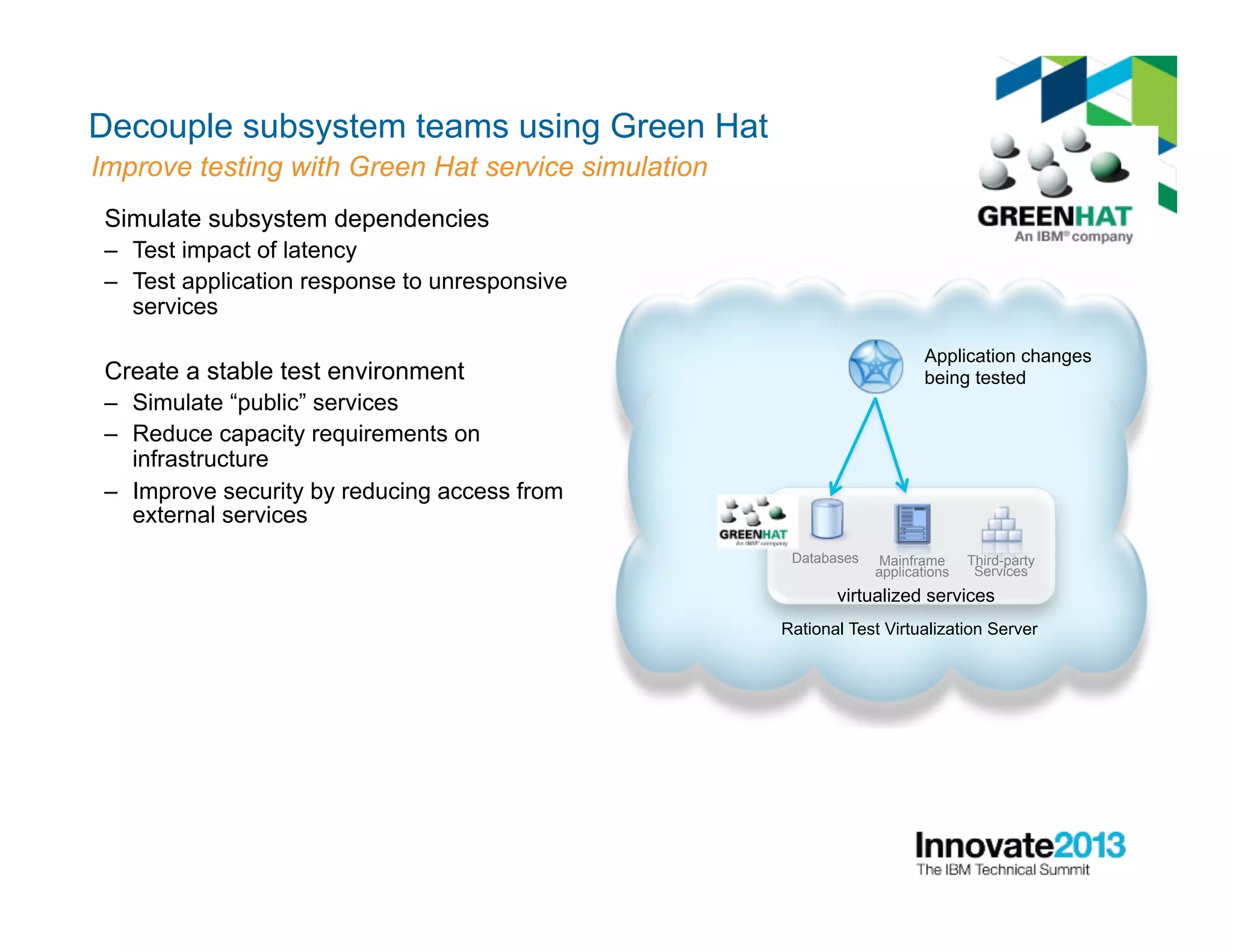
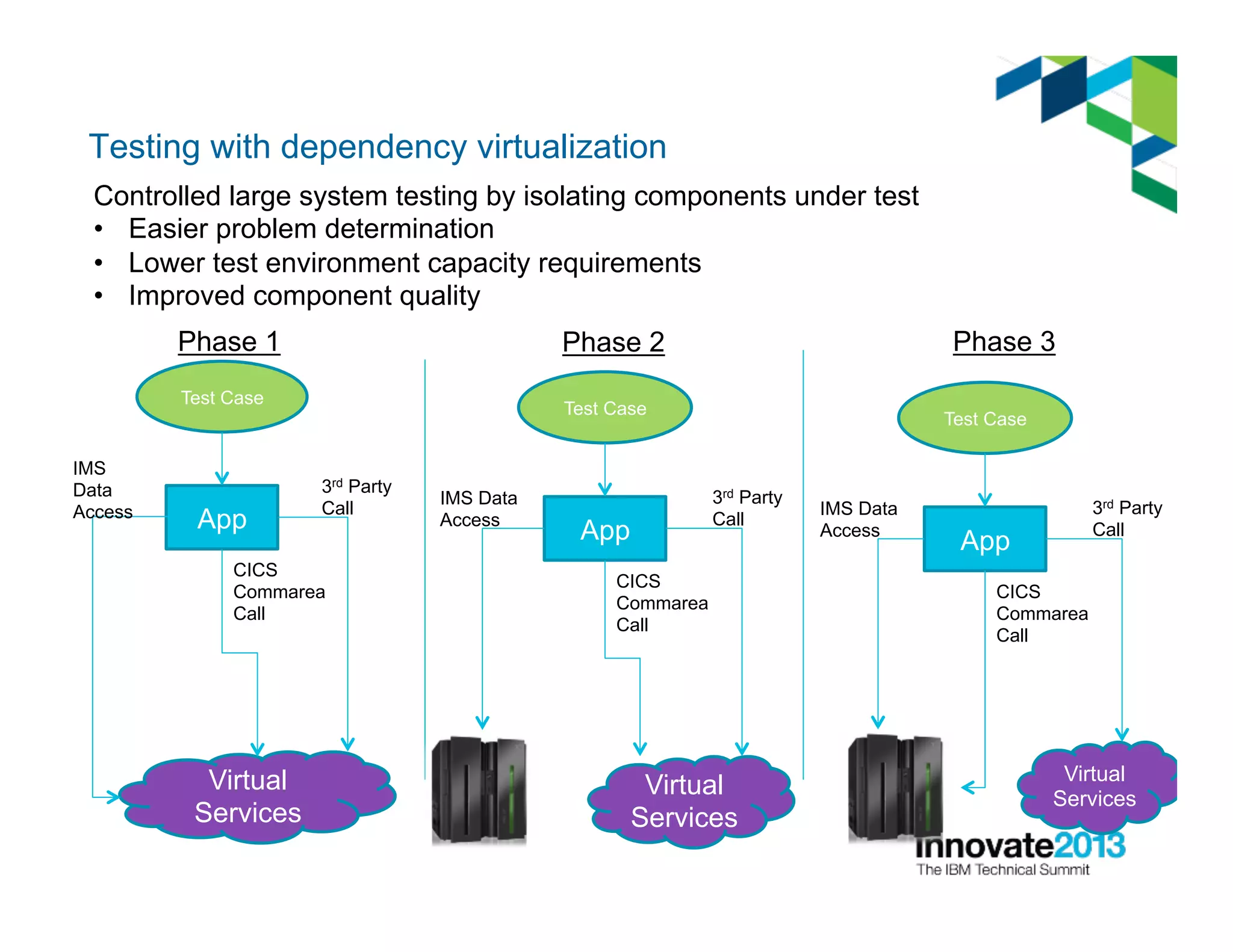
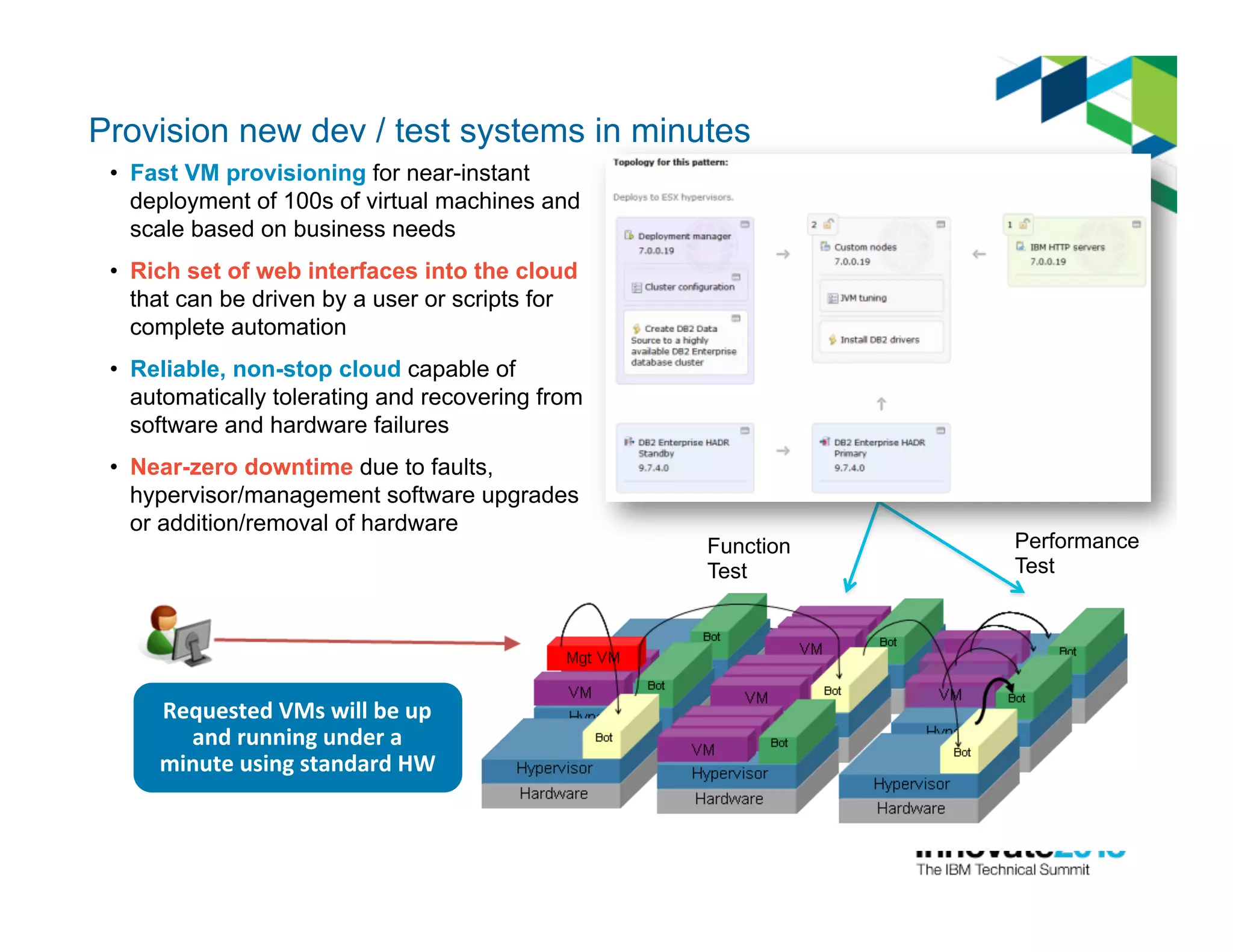
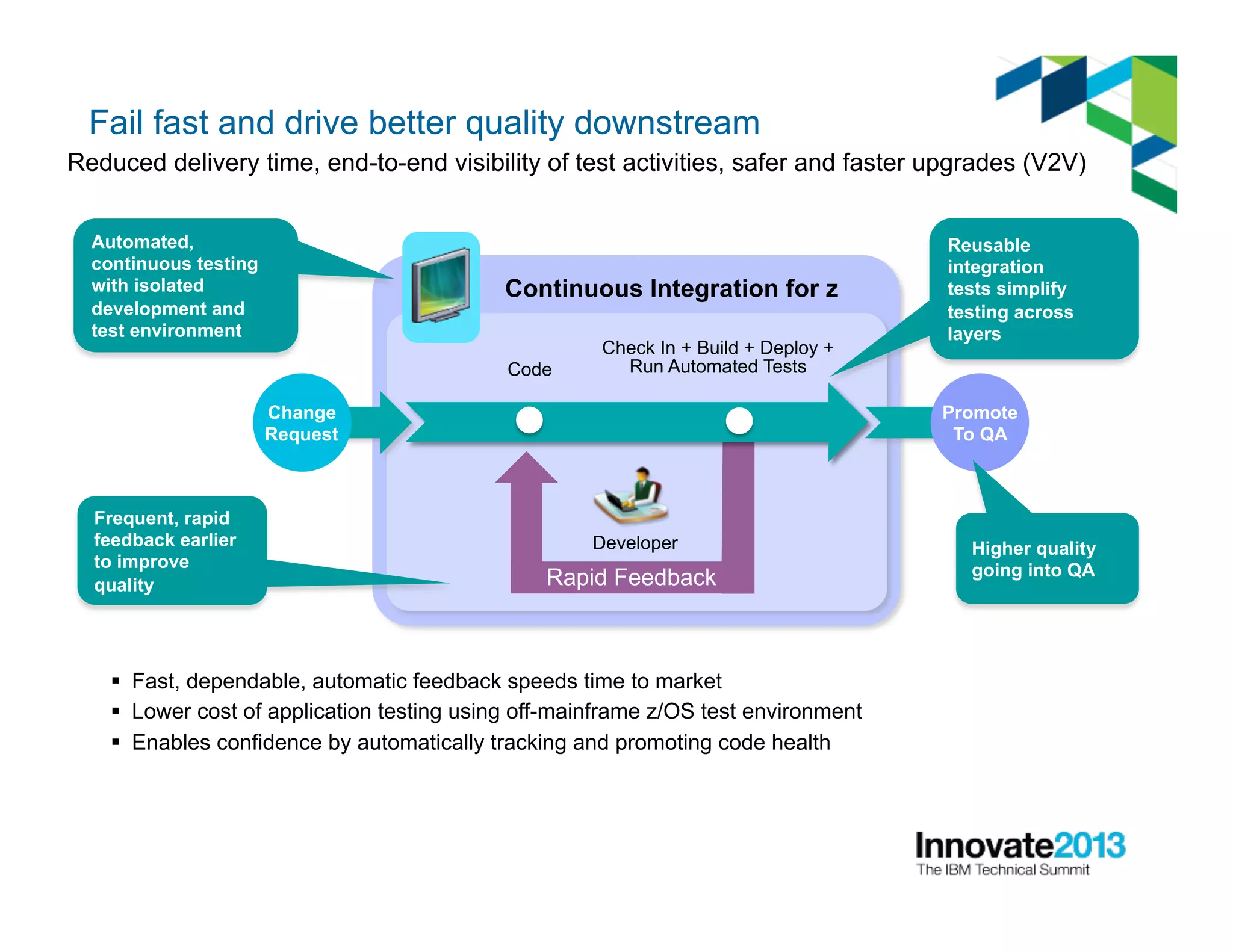
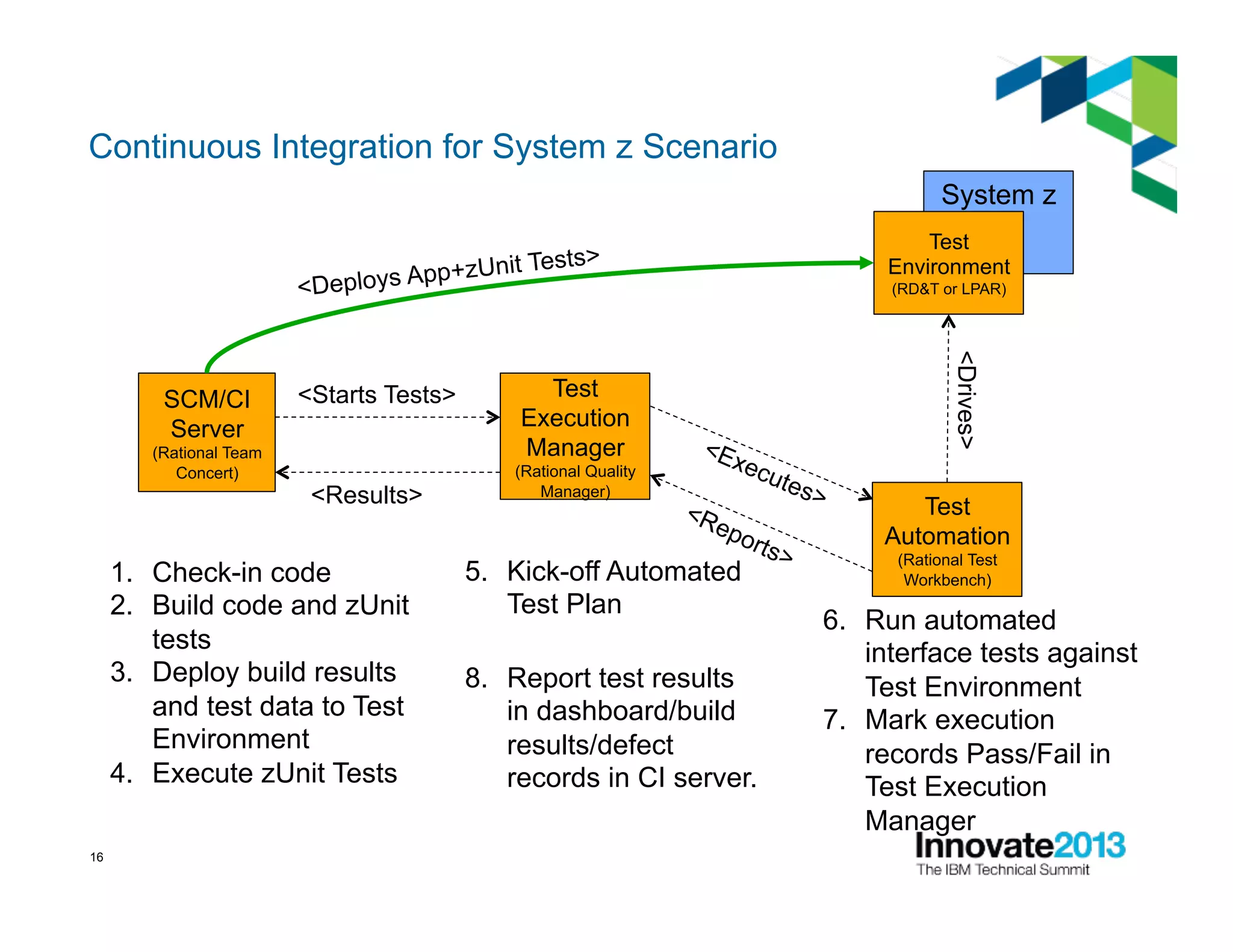
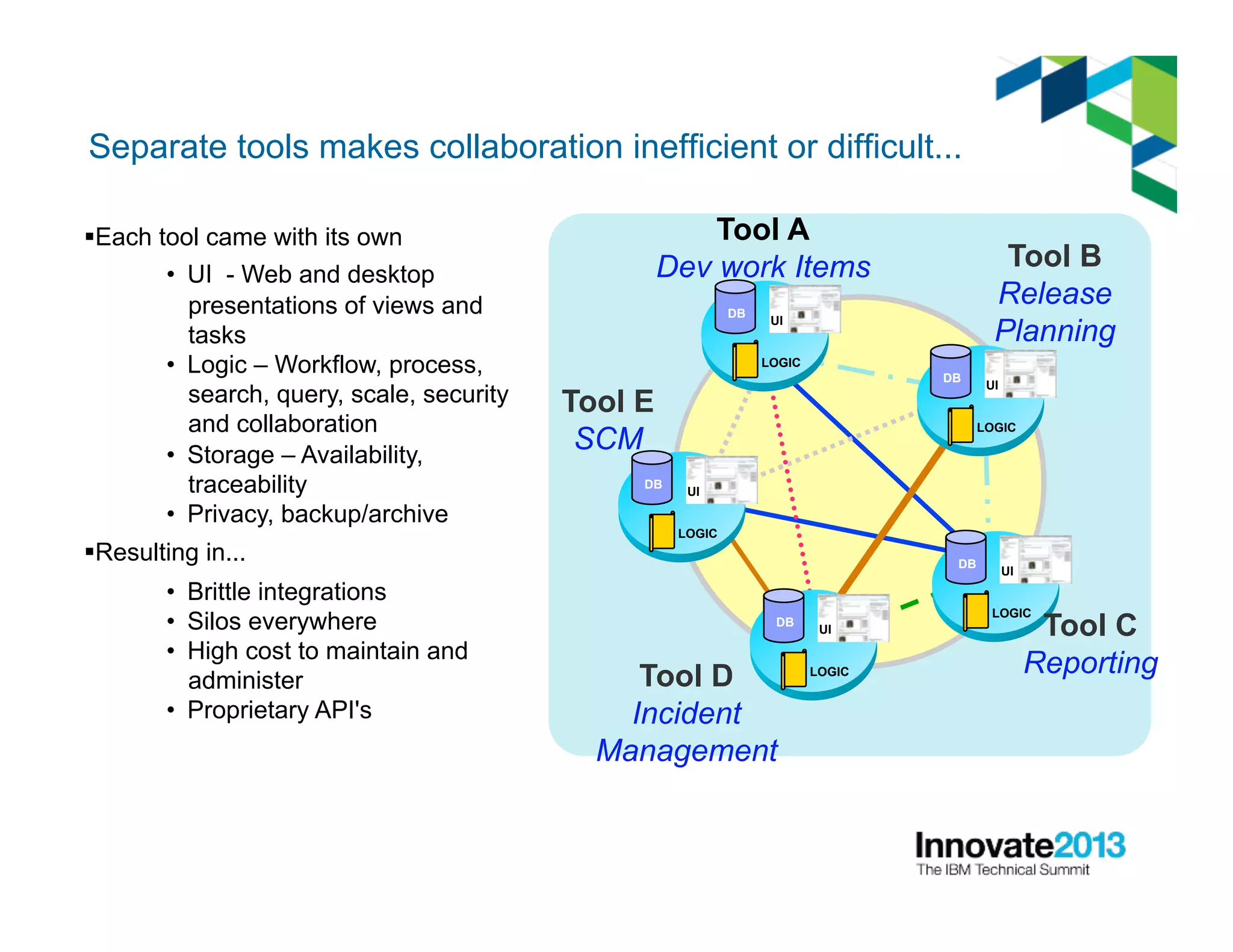
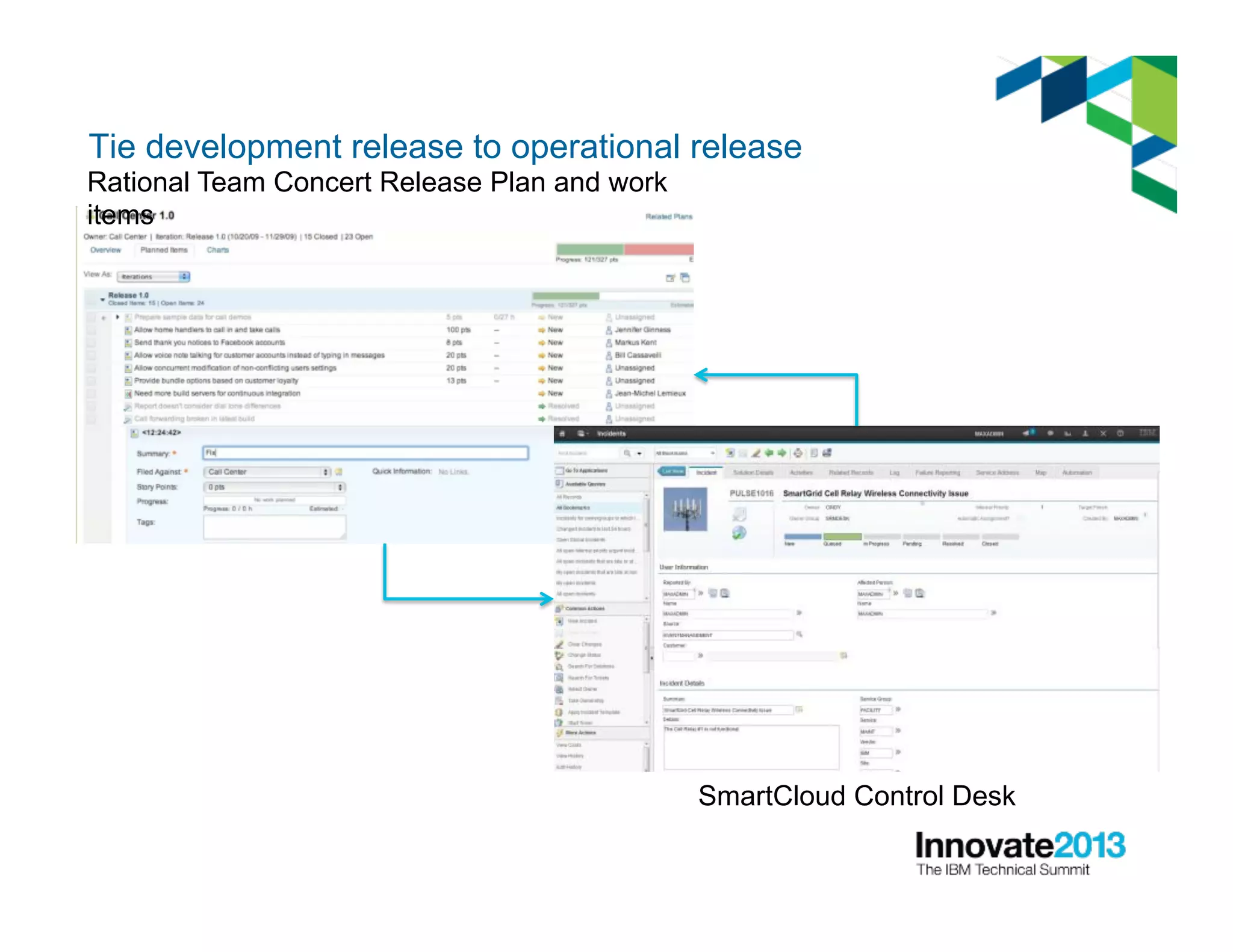
![19 19
Delivery Organized for Flexibility and Speed
Organized by application team, horizontally sliced, dedicated resources, highly automated
Problems Encountered
1. Shared resources
combined with overlapping
schedules can elicit
conflicts, impede innovation
and slow code delivery
2. Coordination of
environmental changes and
releases cause bottlenecks,
delays and additional
overhead
3. Shared test data is difficult
to manage and can lead to
over testing or incorrect test
results
4. Provisioning, managing,
and synchronizing project
test environments including
data
QA/IntegrationTestLPAR
z/OS LPAR
…
Project
Team
[April Maintain]
Project
Team
[Prototype SOA]
Project
Team
[June New Func]
Project
Team
[Dec Sys Upgrade]
Integr.
Test
Data
LPAR
Data
RD&T
Data
RD&T
Data
LPAR
Data](https://image.slidesharecdn.com/devopsformainframeinnovatesession2402-130610104446-phpapp01/75/Dev-ops-for-mainframe-innovate-session-2402-19-2048.jpg)
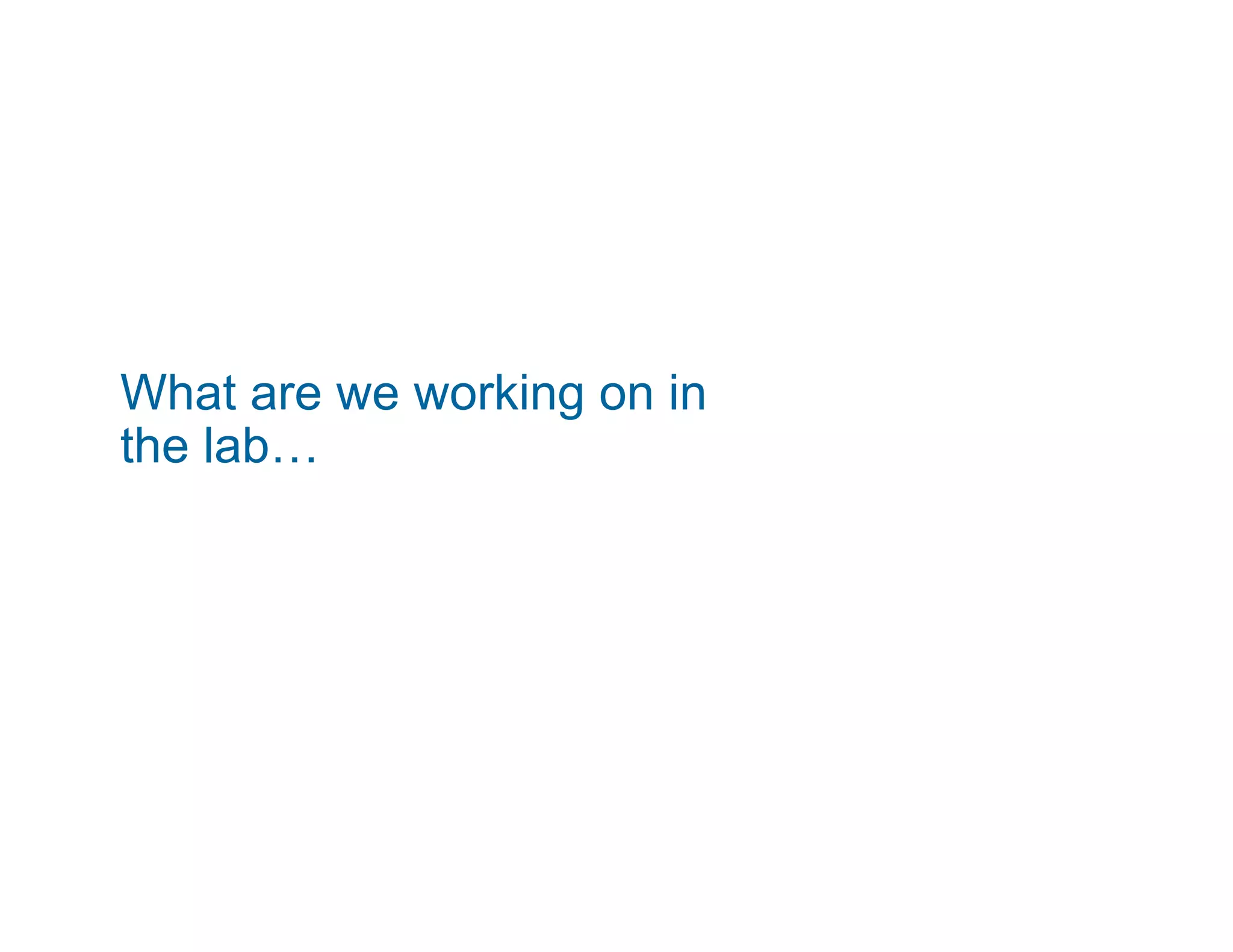
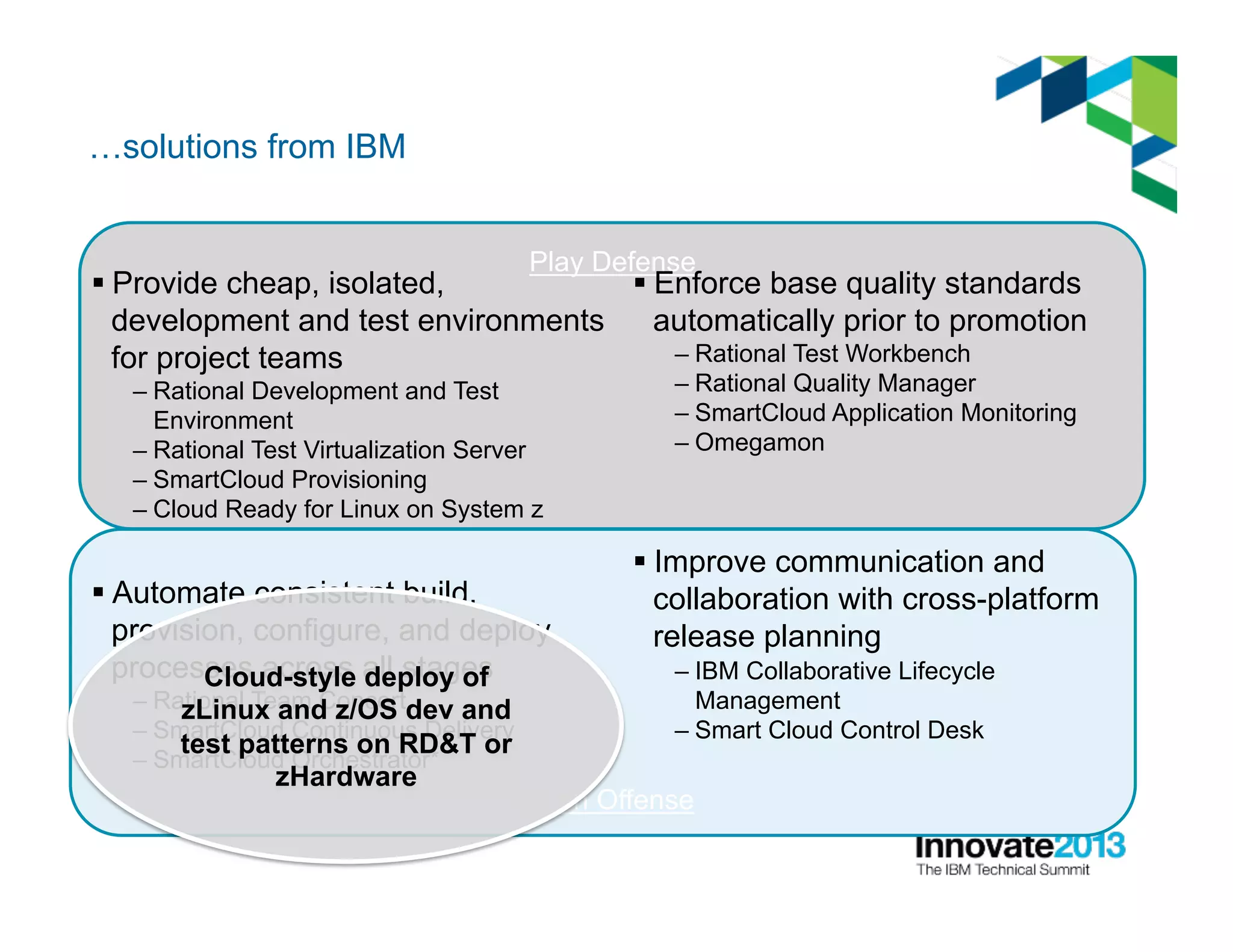
![Infrastructure
as Code
Source Control
Management
Source Artifacts
.cbl
.asm
.cpy
CLIST.rexx
Provisioning using Cloud
#!/usr/bin/env ruby
class DevopsDeployer
def initialize(build_url, build_id)
@log = Logger.new(LOG_FILE)
@log.level = LOG_LEVEL
@iaas_gateway = IaasGateway.new(HsltProvider.new(),
LOG_FILE, LOG_LEVEL)
@server_instance = nil
rtc_build_system_provider = RtcBuildSystemProvider.new(
RTC_REPOSITORY_URL, RTC_USER_ID, RTC_PASSWORD_FILE)
@build = rtc_build_system_provider.resolve_build(
build_url, ENV['buildResultUUID'], build_id)
@build_system_gateway = BuildSystemGateway.new(
rtc_build_system_provider, LOG_FILE, LOG_LEVEL)
end
def add_build_stamp
template_file = WEB_APP_ROOT +
"/app/templates/pages/page.html"
@log.info "Adding build ID stamp #{@build.id} to
#{template_file}"
# Read in the file's contents as a string, replace
# the build_id, then overwrite the original contents
# of the file
text = File.read(template_file)
new_text = text.gsub(/{{ build_id }}/,
"<a href="#{@build.uri}">#{@build.id}</a>")
File.open(template_file, "w") { |file|
file.puts new_text
}
end
# ...](https://image.slidesharecdn.com/devopsformainframeinnovatesession2402-130610104446-phpapp01/75/Dev-ops-for-mainframe-innovate-session-2402-22-2048.jpg)
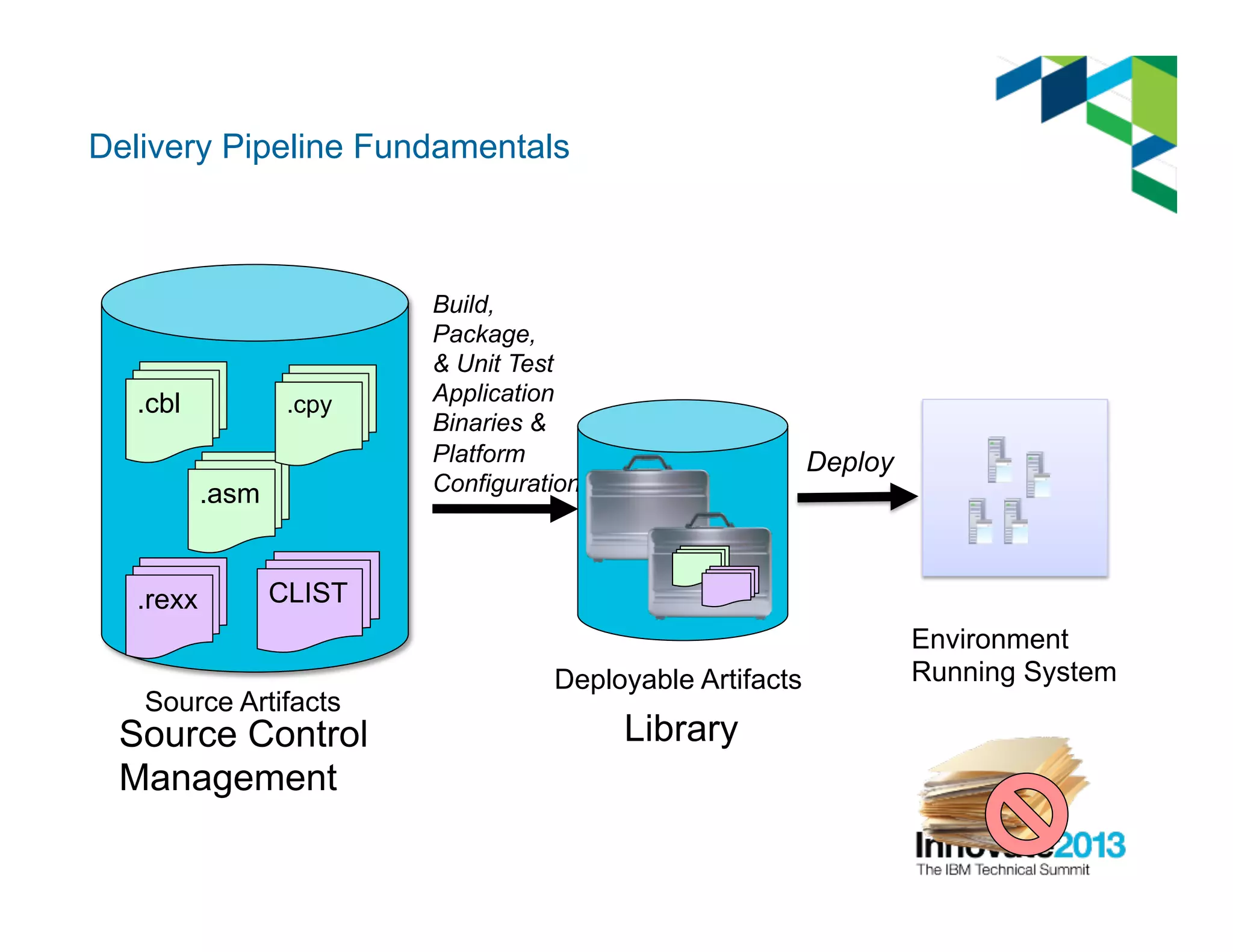
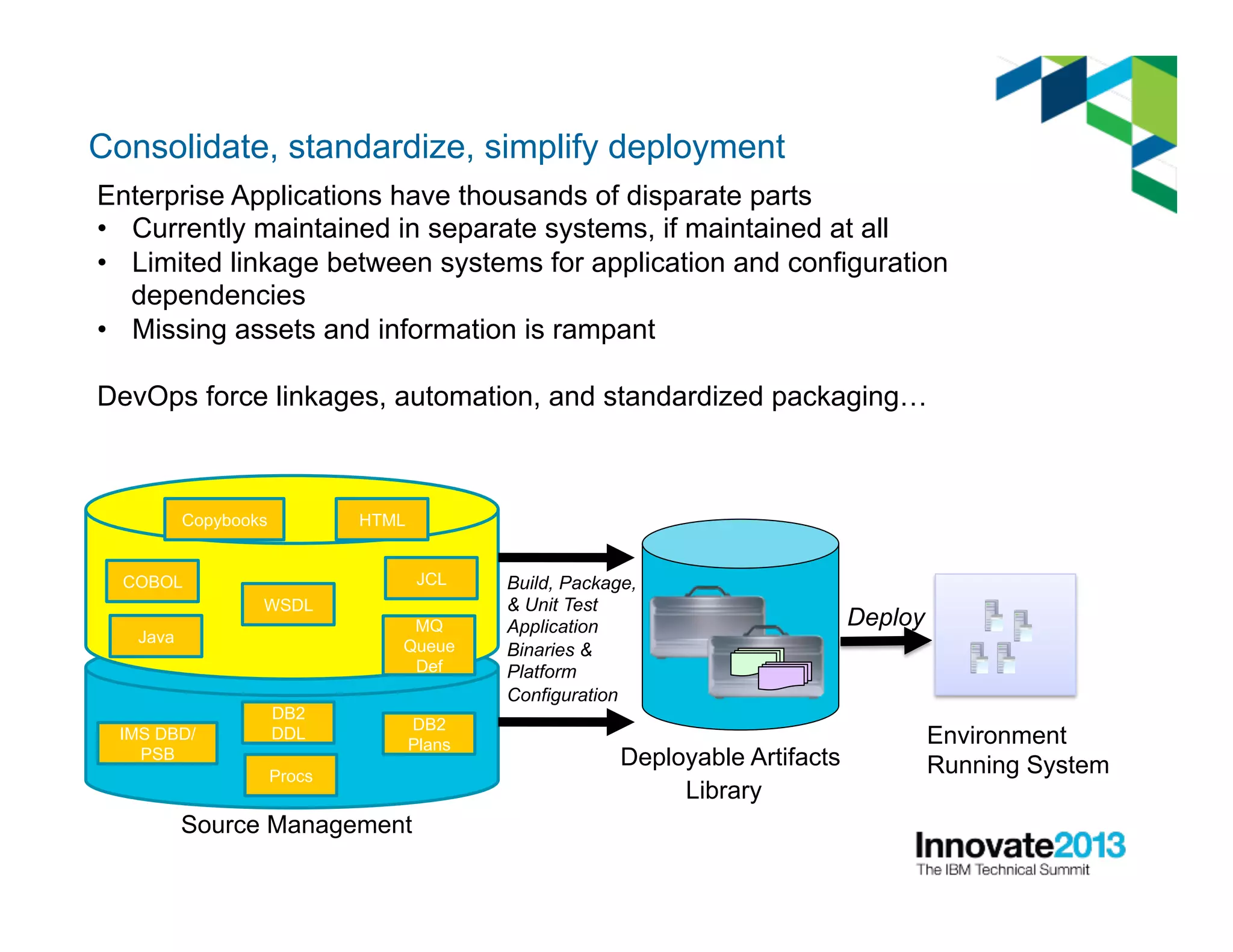
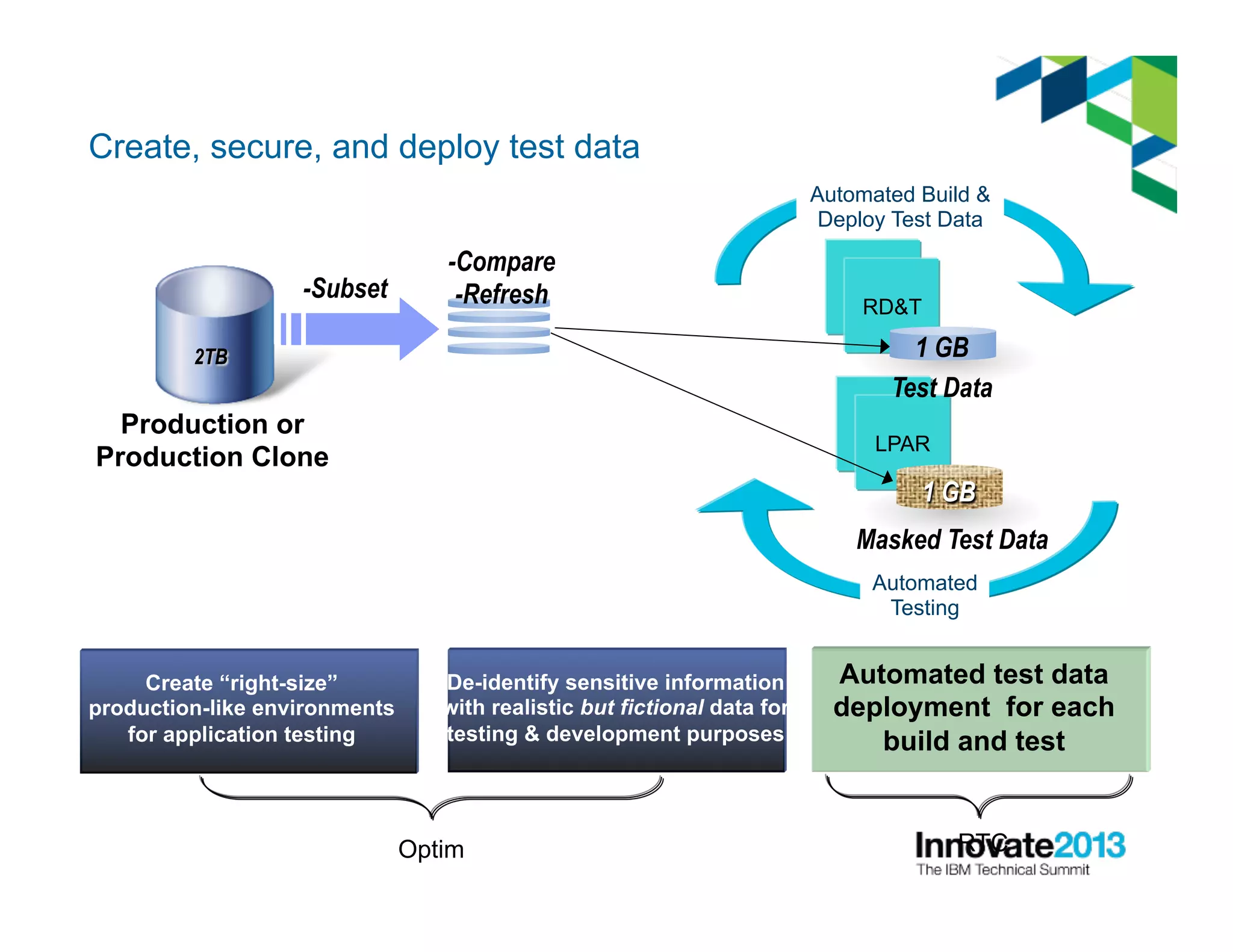
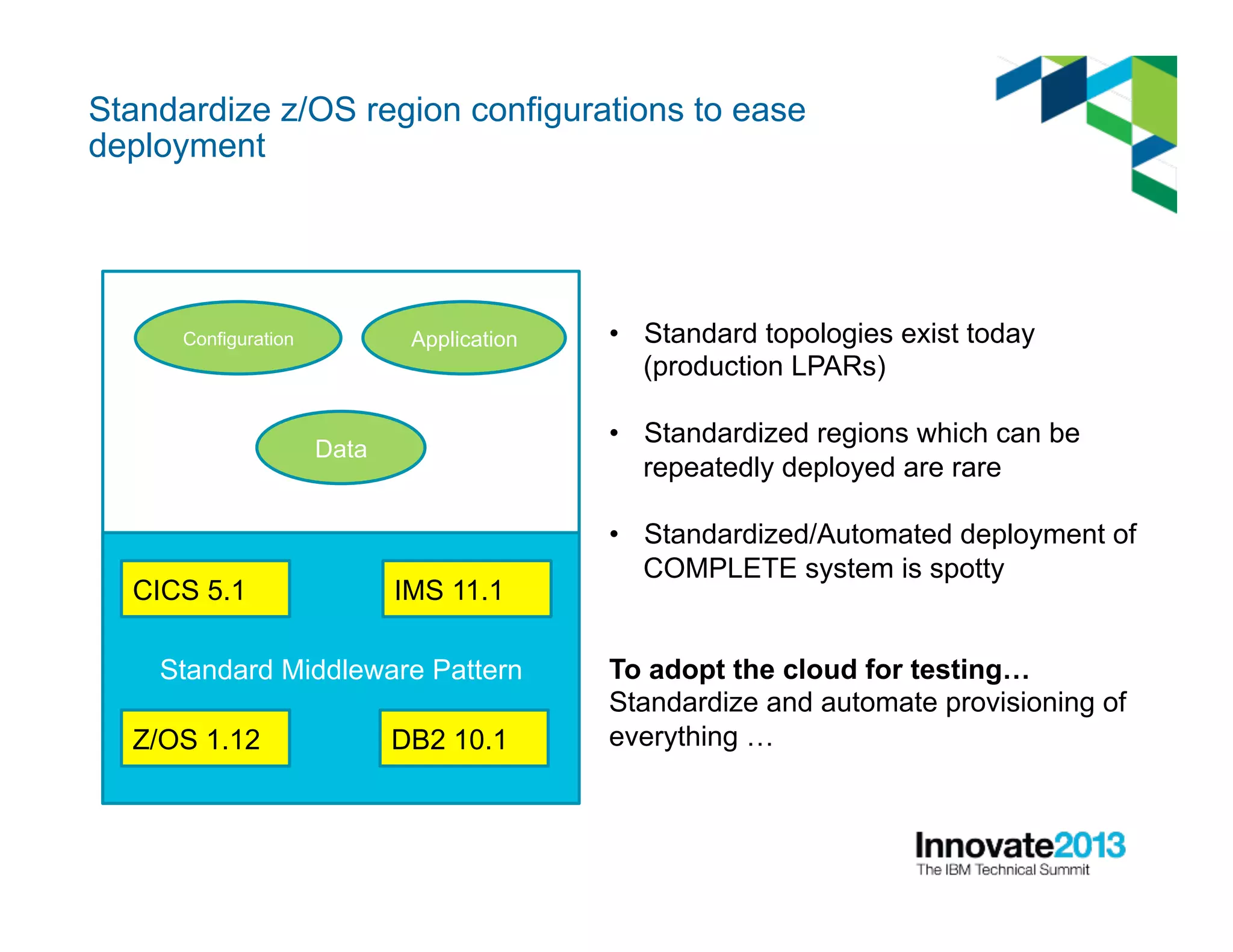
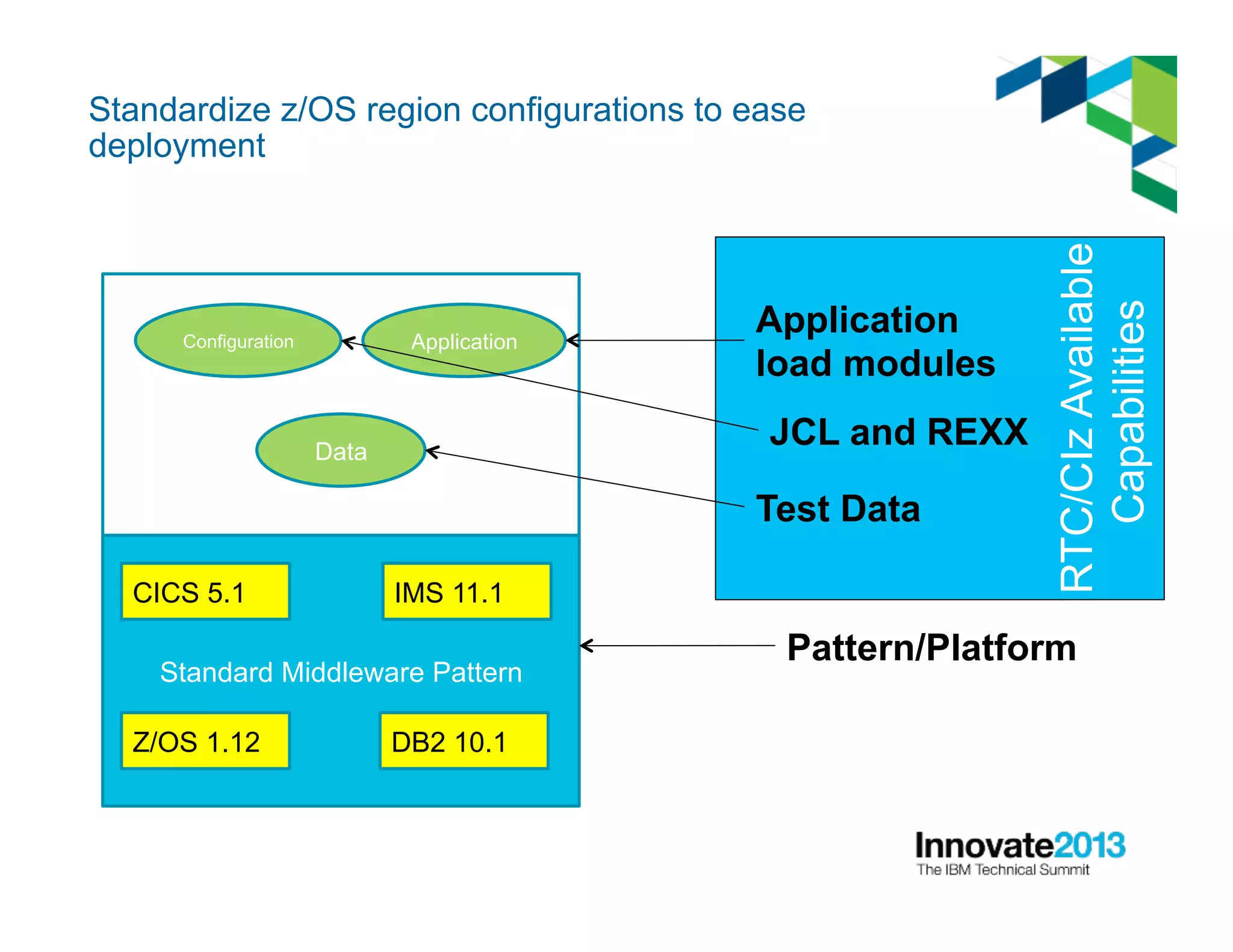
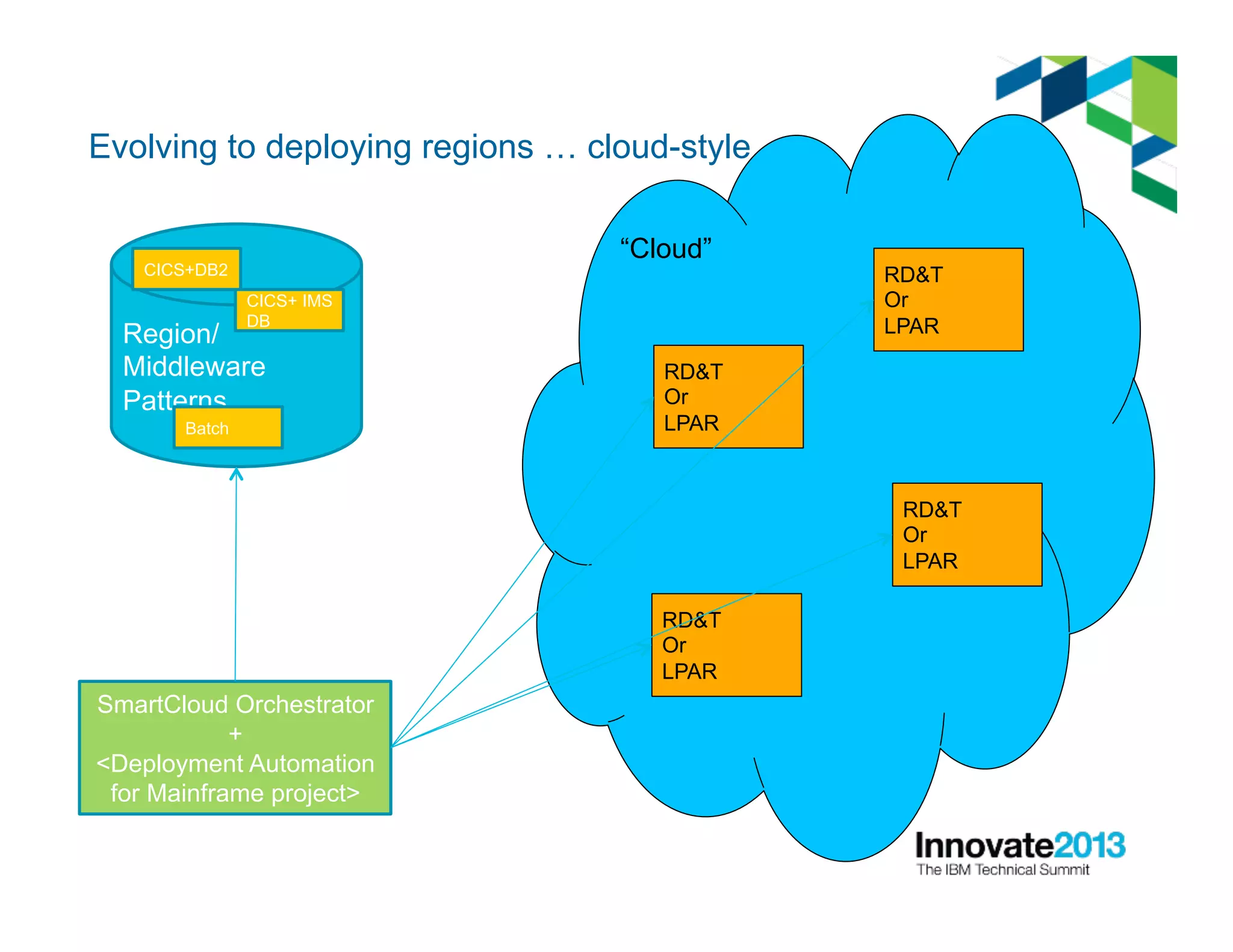
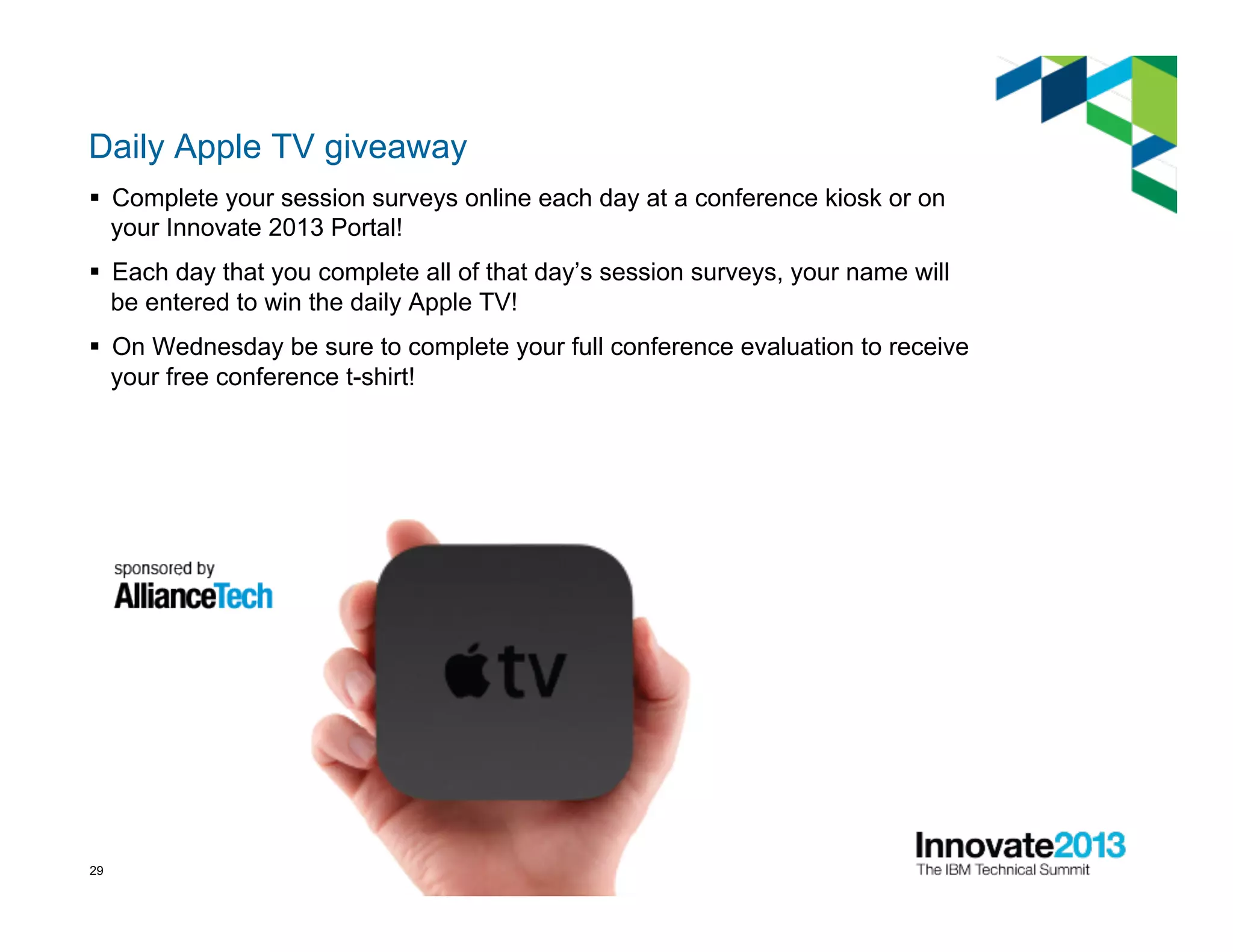
![30
Acknowledgements and disclaimers
© Copyright IBM Corporation 2013. All rights reserved.
– U.S. Government Users Restricted Rights - Use, duplication or disclosure restricted by GSA ADP Schedule Contract with IBM Corp.
IBM, the IBM logo, ibm.com, Rational, the Rational logo, Telelogic, the Telelogic logo, Green Hat, the Green Hat logo, and other IBM products
and services are trademarks or registered trademarks of International Business Machines Corporation in the United States, other countries, or
both. If these and other IBM trademarked terms are marked on their first occurrence in this information with a trademark symbol (® or ™),
these symbols indicate U.S. registered or common law trademarks owned by IBM at the time this information was published. Such trademarks
may also be registered or common law trademarks in other countries. A current list of IBM trademarks is available on the Web at “Copyright
and trademark information” at www.ibm.com/legal/copytrade.shtml
If you have mentioned trademarks that are not from IBM, please update and add the following lines:
[Insert any special third-party trademark names/attributions here]
Other company, product, or service names may be trademarks or service marks of others.
Availability: References in this presentation to IBM products, programs, or services do not imply that they will be available in all countries
in which IBM operates.
The workshops, sessions and materials have been prepared by IBM or the session speakers and reflect their own views. They are provided
for informational purposes only, and are neither intended to, nor shall have the effect of being, legal or other guidance or advice to any
participant. While efforts were made to verify the completeness and accuracy of the information contained in this presentation, it is provided
AS-IS without warranty of any kind, express or implied. IBM shall not be responsible for any damages arising out of the use of, or otherwise
related to, this presentation or any other materials. Nothing contained in this presentation is intended to, nor shall have the effect of, creating
any warranties or representations from IBM or its suppliers or licensors, or altering the terms and conditions of the applicable license
agreement governing the use of IBM software.
All customer examples described are presented as illustrations of how those customers have used IBM products and the results they may
have achieved. Actual environmental costs and performance characteristics may vary by customer. Nothing contained in these materials is
intended to, nor shall have the effect of, stating or implying that any activities undertaken by you will result in any specific sales, revenue
growth or other results.](https://image.slidesharecdn.com/devopsformainframeinnovatesession2402-130610104446-phpapp01/75/Dev-ops-for-mainframe-innovate-session-2402-30-2048.jpg)
